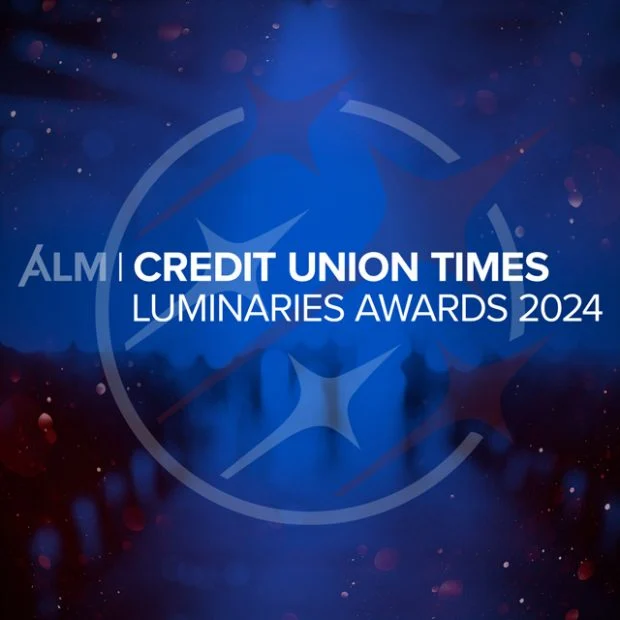Keep calm and carry on” is not just a saying on a coffee mug but how Michele DeBuhr, vice president of consumer credit administration at Portland, Ore.-based OnPoint Community Credit Union lives.
“I try really hard not to sweat the small stuff and just take everything as it comes because I know we'll get it done, and we'll do it well,” said DeBuhr who up until just recently served as the vice president organization effectiveness at OnPoint. “I'm about let's focus on the reason we are here and we'll make it through.”
When she started at the credit union 17 years ago, DeBuhr didn't have plans to stay with the credit union long term.
“Honestly, I didn't plan to stick around for long,” said DeBuhr. “But working with people to help them broaden their understanding and seeing that moment when it happens that was it for me. To know that what we do, no matter how mundane it could be, like Reg Z training for example, it all boils down to the members experience and how we can help that to be amazing.”
With the belief that every connection with a member is important no matter how small, DeBuhr said ultimately it's the employees who are the brand. Her take on training has been aimed at building, constantly reinforcing a culture that inspires and develops leaders who focus on finding the best solutions for members.
“OnPoint isn't a place, a website or a product. OnPoint is a collection of individuals that work as a team to provide members with amazing service and beneficial relationships,” said DeBuhr. “I think that people come to me asking, 'Can we do this?' and my answer is 'You can do anything you want, just know what the potential consequences are.' By giving people the flexibility, leverage and space to own, give input and think about things in a different way, it inspires them to take that empowerment and run with it. I can't tell someone what to do to save my life. I'm not that type of person, but I want to help them find those ideas they have and feel comfortable enough to move ahead with them. Sometimes people just look to someone with a certain title thinking, 'Oh, she or he will decide.' That's not how you get to great solutions. People grow by questioning and realizing they have the power to do something to deliver real change.”
DeBuhr wished more human resource/training departments would change their perspective in evaluating their own policies and procedures.
“How about asking what can a new hire do on day one,” said DeBuhr. “A lot of new hire programs go on for months before they get on the job. Why not let them do something on day one. So for a teller it could be balancing a check or counting the vault, something active and connected so they go home saying, 'I made a contribution.' If they can feel connected and feel, they are contributing to the credit union from their first day it can help them enjoy the job better.”
She added that when it comes to training, more credit unions need to look within and across all departments to find subject matter experts and let them share.
“It's time to decentralize training,” said DeBuhr. “Everyone has some knowledge to share, it's not exclusive to just the training department. So stop limiting it, instead look around, ask who can train this? When people talk about hiring more young professionals into credit unions, the biggest incentive is that they want to be able to contribute and be heard. Think about it. If we want to draw people with the talent, great innovation potential, then we must build or have a culture that extracts or encourages that. A credit union can be as innovative as any other organization but we have to be willing to listen and let people off the leash a bit.”
She said that the old model of classroom training is expensive, time-consuming and outdated. With the concept that people learn more by doing and experiencing as opposed to sitting in a room reading a one-size-fits-all procedure manual, DeBuhr added a peer mentoring program to the array of customized training that OnPoint Community provides.
Based simply on teaching what you know, OnPoint has a peer mentor in each of the branches and departments.
The peer mentoring program for new employees begins after they complete a brief credit union orientation and are matched with a peer mentor in their department or branch. Together the peer mentor and the new employee set up a learning plan and training that is relevant to the position and simple to comprehend. According to DeBuhr, staffers create their own scripts and build processes organically–experiencing real-life member situations, sharing best practices, resources and understanding why certain scenarios are the way they are.
“The peer mentoring has been great on so many levels, one is onboarding new hires, the other has been the professional and personal growth of mentors,” said DeBuhr.
Those interested in becoming mentors spend time via online sessions once a month for a year learning how to effectively mentor peers.
“In every branch it also gives the mentors that big picture connection of what we do matters to the bottom line of the organization,” said DeBuhr. “Many have gone into different positions from teller to lending representative or supervisory positions. That's not what was intended when we started this but it's what has been happening. People feel empowered regardless of what their title is and new employees have a trusted friend and resource.”
She pointed to her own recent promotion as an example that the culture at OnPoint is more than just hype.
“It's really one of the many examples that showcase the learning environment here at OnPoint, that people who think in an innovative way, with a strong work ethic and are willing do what it takes to do things well and better the member experience can get ahead,” said DeBuhr. “The past 17 years have gone by in a blip, and I've never been bored. Sometimes early in our careers, we don't give ourselves enough credit and are left feeling like we just have to wait and something will happen. It really is up to us. Every employee has to make those decisions, take action, recognize those mentors around you and as Jim Armstrong, the head of HR here told me, 'Go slow to go fast.'”
She added that a change in perspective could also help the industry as a whole.
“I think sometimes we get caught up in the definition of what a credit union is to the point that it becomes an adjective as in, 'Doing XYZ isn't very credit union-like,” said DeBuhr. “I think as long as we stay true to our charters and remember that as a member-owned organization, the members' needs direct our vision then we as an industry can do anything we want to. To me being a credit union means that our mission is to benefit our members' financial well being. There are so many ways to do that. Not a credit union way or a bank way. We might not do what's ultimately right for the member if we only think of solutions in terms of a credit union way. It's more important to think in terms of having more questions than statements and along the lines of what if.”
© 2025 ALM Global, LLC, All Rights Reserved. Request academic re-use from www.copyright.com. All other uses, submit a request to [email protected]. For more information visit Asset & Logo Licensing.







